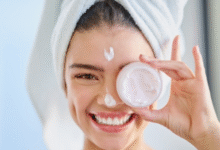How to Create the Perfect Product for Sensitive Skin

Creating a skincare product specifically designed for sensitive skin is both a rewarding and challenging journey. Sensitive skin requires extra care, gentle ingredients, and thorough testing to ensure that the product soothes rather than irritates. If you’re passionate about developing a product for this delicate skin type, it’s essential to understand the unique needs of sensitive skin and how to meet them effectively. Here’s a step-by-step guide on how to create the perfect product for sensitive skin.
Understand What Sensitive Skin Really Means
Sensitive skin isn’t just about being prone to irritation; it’s a condition where the skin barrier is weaker and more reactive to environmental factors, chemicals, or allergens. People with sensitive skin often experience redness, itching, burning, or dryness when using conventional skincare products.
Before formulating your product, research the common triggers for sensitive skin, such as fragrances, harsh preservatives, alcohol, and certain active ingredients like retinoids or strong acids. Understanding these sensitivities will guide your ingredient selection and formulation process.
See also: Mutf_In: Axis_Quan_Dir_Hu4dn0
Start with a Clear Product Concept
Determine what type of product you want to create—whether it’s a moisturizer, cleanser, serum, or sunscreen. Your product’s purpose will influence the ingredients and texture you choose. For sensitive skin, products that provide hydration and strengthen the skin barrier tend to be very popular.
A simple, focused concept like “a calming moisturizer for redness-prone skin” or “a gentle cleanser that removes impurities without stripping moisture” helps narrow down formulation choices and marketing messaging.
See also:
Choose Gentle, Proven Ingredients
The cornerstone of any sensitive skin product is its ingredients. Look for soothing, non-irritating components backed by scientific research and dermatologist recommendations. Here are some ingredients known for their gentle, calming effects:
- Ceramides: Help restore and maintain the skin’s protective barrier.
- Niacinamide (Vitamin B3): Reduces inflammation and redness while improving barrier function.
- Aloe Vera: Soothes irritation and provides hydration.
- Colloidal Oatmeal: Known for its anti-inflammatory properties and skin barrier repair.
- Squalane: A gentle, moisturizing oil that mimics the skin’s natural oils.
- Panthenol (Vitamin B5): Moisturizes and supports skin healing.
Avoid ingredients that commonly trigger reactions, such as artificial fragrances, alcohols (especially denatured or drying ones), sulfates, parabens, and strong chemical exfoliants.
Formulate with Simplicity
When developing products for sensitive skin, simplicity is key. Complex formulas with a long list of ingredients can heighten the chances of irritation or allergic reactions. It’s best to focus on a streamlined formula that emphasizes both effectiveness and gentleness.
Work closely with experienced skin care products contract manufacturers to ensure your formulation stays minimalistic and safe. Keep your product free of synthetic fragrances, or only incorporate naturally derived, hypoallergenic scents if absolutely necessary. Avoid colorants and unnecessary additives altogether, as these often trigger sensitivity in delicate skin.
Test Rigorously
Once your formula is developed, testing is critical. Start with:
- Patch Testing: Conduct small-scale patch tests on volunteers with sensitive skin to check for adverse reactions.
- Stability Testing: Ensure your product maintains its effectiveness and safety over time under different storage conditions.
- Microbial Testing: Confirm the product is free from harmful bacteria and fungi, especially important if your product is preservative-free or uses natural preservatives.
Clinical testing and dermatological approval add credibility and reassure customers that your product is safe.
Focus on Packaging
Sensitive skin products should be packaged to protect the formulation from contamination and degradation. Consider airless pump bottles or tubes that limit exposure to air and bacteria, helping maintain product integrity.
Packaging should also be easy to use for people who may have compromised skin barriers or conditions like eczema, so avoid complicated lids or dispensers.
Educate Your Customers
When marketing your product, transparency is key. Educate your customers on the benefits of your ingredients and why your product is suitable for sensitive skin. Provide clear usage instructions and highlight your product’s hypoallergenic, fragrance-free, and dermatologist-tested features.
Consider offering guides on how to care for sensitive skin generally, which helps build trust and positions your brand as an expert in the niche.
Monitor Feedback and Iterate
Once your product is launched, monitor customer reviews and feedback closely. Sensitive skin varies from person to person, so hearing directly from users can provide invaluable insights.
Be prepared to make improvements based on real-world reactions—whether it’s tweaking the formula, adjusting packaging, or refining your marketing message.
Final Thoughts
Creating the perfect product for sensitive skin is about empathy, science, and careful craftsmanship. It requires understanding the delicate nature of sensitive skin, selecting gentle but effective ingredients, and rigorous testing to ensure safety and efficacy. By focusing on simplicity, transparency, and continuous improvement, you can develop a product that not only meets the needs of sensitive skin but also builds lasting trust with your customers.
If you’re ready to embark on this rewarding journey, start with research and ingredient selection, and always put the health and comfort of sensitive skin first. Your thoughtful approach can make a meaningful difference in many people’s skincare routines.





